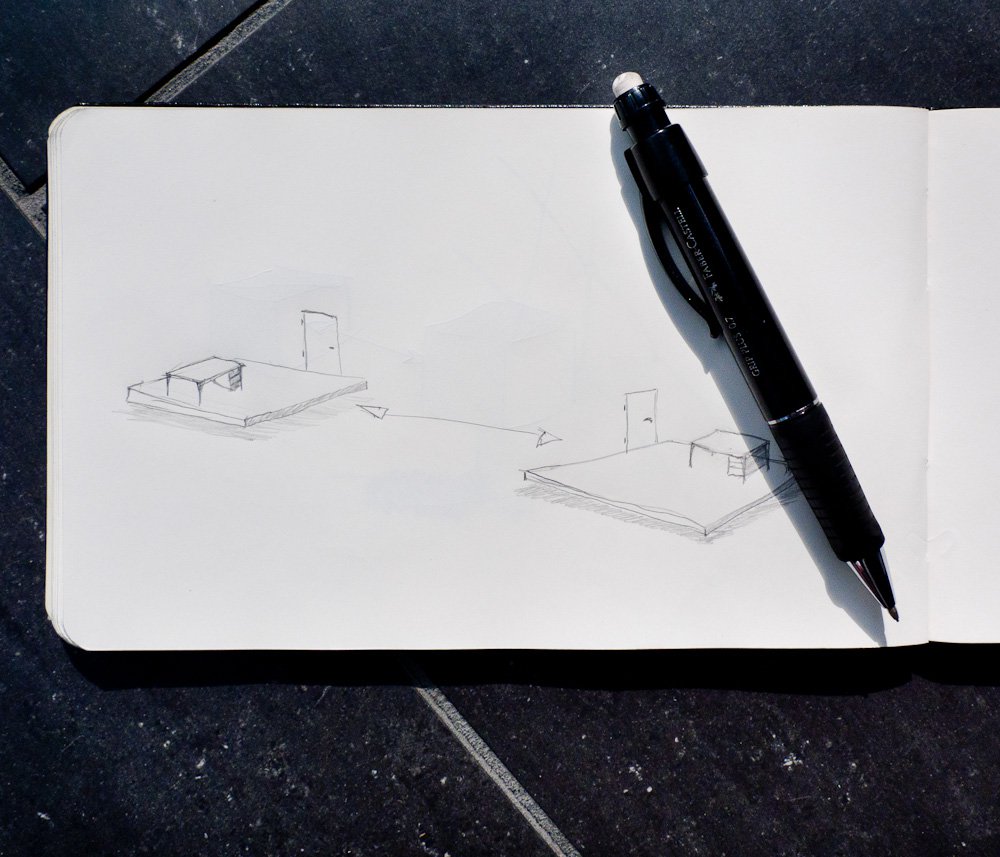With our vision of implicit shared presence, we intend to auditorily link two physical places in order to establish and support an implicit connection between their residents.
Motivation and Intention
Interpersonal interaction consists of many parallel information cues which the interactants most often process in parallel. Roughly, these streams can be discerned into being either more explicit/conscious (e.g. speech, sign language) or more implicit/unconscious (e.g. prosody, facial expressions, proxemics). While the explicit part of a conversation might stop at a point, implicit streams usually last until one of the interactants leave the scene. This circumstance means that, though people might not talk to each other, there is still communication going on.
Today’s telecommunication services (like e.g. cell phones, Skype, or Facebook), focus primarily on the explicit parts of conversations. They thereby do not mediate information streams about subconscious actions of their users. In order to actually provide these cues, we think that long-term connections need to be established, which mediate data streams that are designed for unconscious/implicit usage.
 Connected Spaces Concept
Connected Spaces Concept
Research Questions
During the first phase, we identified the following (still very general) questions that we intend to answer and refine:
- What are desired qualities of the connection between the two spaces?
- What kind of technical system support the above mentioned intentions?
- What are the essential parts of such a system?
- Is there a specific context in which we want to operate?
In the upcoming posts, we will keep you updated on the progress of this investigation.
This is the initial post of a series of articles that describe a work in progress on implicit shared presence. It is a collaboration between Till Bovermann (Medialab, Department of Media, Media Aalto University), Christian Leichsenring (CITEC, Bielefeld University), and René Tünnermann (CITEC, Bielefeld University).